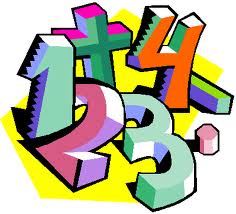
Go ahead and read the title of this blog again. I’ve been thinking about it for almost 24 hours. It’s what my 4th grader told me last night after dinner. He and his sisters were allowed to choose anything they wanted for dinner. They chose a famous chef’s ravioli concoctions. After heating them in the microwave and declaring them the best thing they’ve ever tasted, he said he wanted that kind of meal every night. I explained that we simply couldn’t afford to eat that kind of prepared food all the time.
“Well,” he said, “exactly how much did it cost?”
Never wanting to miss an opportunity to meaningfully apply mathematical concepts, I asked him to think about it and tell me how much the meal cost. We looked at the receipt and noted that each container cost ninety-seven cents. Two of our children ate two containers. The smallest one ate only one container. After less than a minute he confidently said,
“It costs four dollars and eighty-five cents.”
I was fascinated by his immediate and sure response and asked him how he figured it out.
He described the following steps:
- I know that there were two of us who had two containers and one of us had one. That makes five containers of food.
- Ninety-seven cents is really close to a dollar. I know that five times a dollar is five dollars. But, that’s just close to the answer. It’s not the answer.
- Ninety-seven cents is three cents away from a dollar. There were five containers. Five times three is fifteen.
- Five dollars minus fifteen cents equals four dollars and eighty-five cents.
“That was easy. And, if you ask me that’s a pretty cheap way to feed all of us without having to cook. All you had to do was heat it up and it was less than five bucks.”
Being a math educator, I’ve taught all of our children standard algorithmic procedures and divergent problem-solving procedures, but I’ve also taught them how to use good number sense to determine answers. I was relieved that he had used his knowledge of money and multiplication instead of demanding a sheet of paper and a pencil.
I praised him for being so smart and for using all he knew to help him determine the answer. I told him that his teacher this year would be impressed by his ability to think mathematically and use great number sense. That’s when he made the shocking statement,
“We’re not allowed to use number sense at school. They take off points if you try to use number sense. We’re supposed to use the test-taking strategies and show in our work that we did. If we don’t, we get points taken off—even if we have the right answer.”
Do we think about the messages we are giving students? Are we encouraging our students to become mathematically intelligent or just test takers? What is good number sense and how can I help develop it?
Skip Fennel writes about the importance of number sense in this article, http://www.nctm.org/about/content.aspx?id=13822.
Numeracy Blocks talks about number sense being the foundation for everything else one learns about math, yet we take for granted its complexities. http://naturalmaths.com.au/numblocks/research_2.htm
The Florida Department of Education gives some great ideas for developing number sense. http://naturalmaths.com.au/numblocks/research_2.htm
Wichita State University Department of Math and Science students in the 750J Workshop offered examples of number sense in the animal world. http://www.math.wichita.edu/history/index.html
As for me, I breathed in for a couple of seconds. (Okay, the statement almost knocked the wind out of me and I had to count to thirty before answering him.) Knowing that it won’t help our children for me to be critical of the requirements of their school system and teachers, I answered,
“Well, you can use number sense everywhere else but in school.”
“Common sense is instinct. Enough of it is genius.” -George Bernard Shaw

